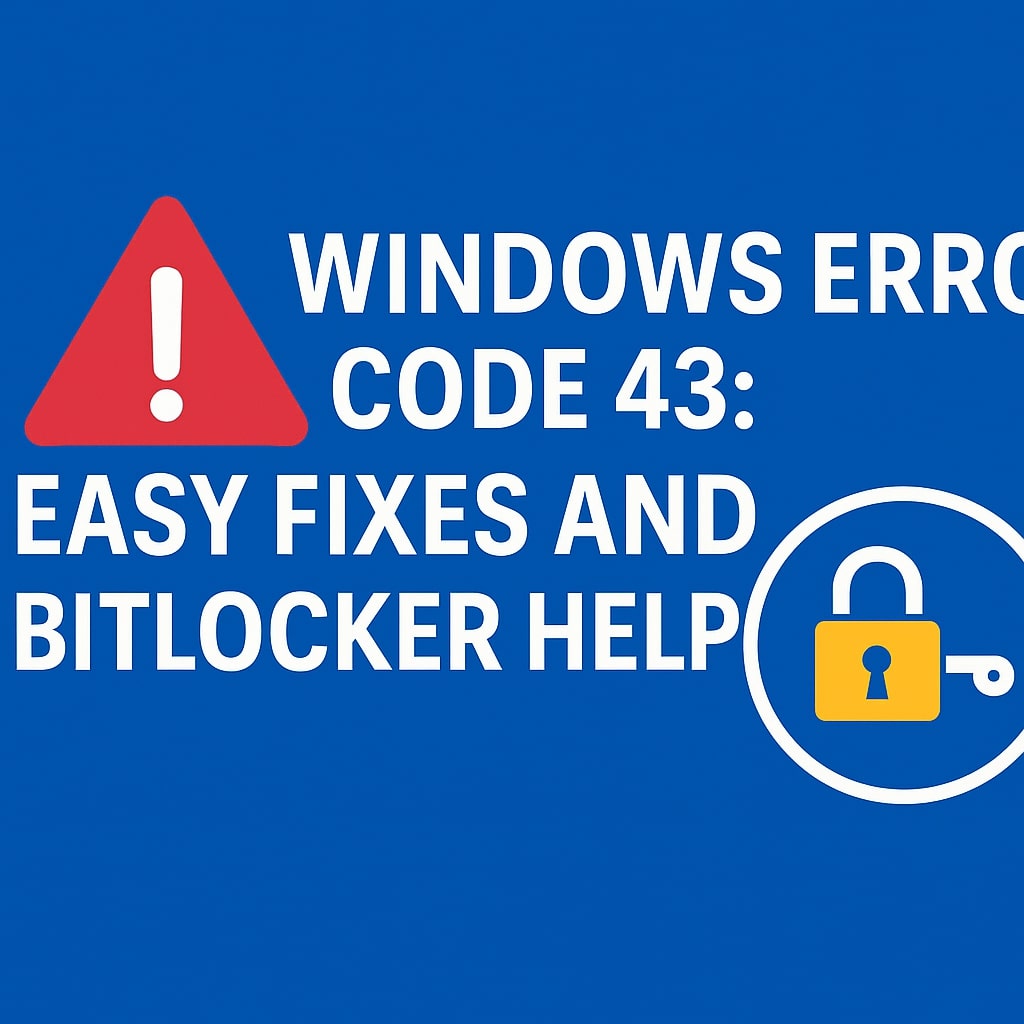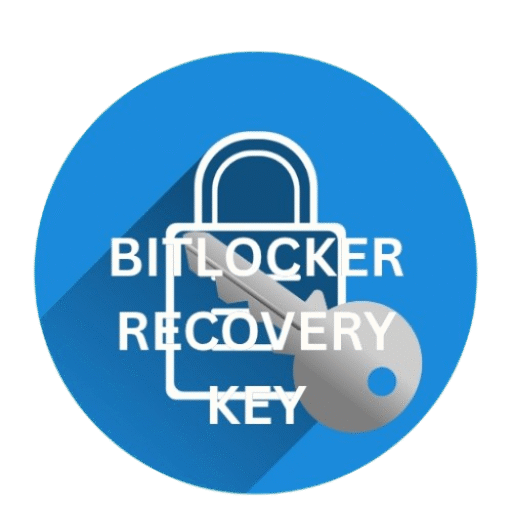
❗ Understanding Windows Error Code 43: Easy Fixes and BitLocker Help
Have you ever plugged in a USB drive or tried to use your graphics card only to see an annoying message that says:
“Windows has stopped this device because it has reported problems. (Code 43)”
Don’t worry — you’re not alone. Error Code 43 is one of the most common issues in Windows, especially when it comes to devices like USB drives, GPUs, or external hard disks. It can even become a real headache when BitLocker encryption is involved, making data recovery feel impossible.
But here’s the good news — fixing this issue is totally possible. And you don’t need to be a tech wizard to do it!
🧠 What Is Windows Error Code 43?
Windows Error Code 43 happens when Device Manager stops a hardware device from working because it told Windows, “Hey, something’s not right!”
It usually shows up for:
- USB flash drives or external hard drives
- SD cards or memory cards
- Graphic cards (like NVIDIA, AMD)
- BitLocker encrypted drives
⚙️ Where You Might See the Error
You’ll often see Code 43 in Device Manager with a yellow warning symbol:
- Right-click the Start menu and choose Device Manager
- Look for any yellow triangle ⚠️
- Right-click on the troubled device and choose Properties
- The error message will appear under the General tab
🔍 What Causes Windows Error Code 43?
| Cause | What It Means |
|---|---|
| Device malfunction | The hardware might be broken or overheating |
| Outdated/corrupt driver | The software that runs the device isn’t working right |
| Power management issue | Your PC may be turning off the device to save energy |
| USB port or cable issues | The cable, connector, or USB port might be faulty |
| BitLocker encryption problem | The drive is encrypted and Windows can’t unlock or read it |
| System update bugs | Recent Windows updates could interfere with drivers or devices |
🛠️ How to Fix Windows Error Code 43 (Step-by-Step)
🔁 Step 1: Restart Your Computer
Yes — the classic fix. Sometimes a simple reboot can reset hardware drivers and remove temporary glitches.
🔌 Step 2: Unplug and Replug the Device
Remove the device (USB or external hard drive), wait a few seconds, and plug it back in. If using a cable, try a different one.
⚙️ Step 3: Update or Reinstall the Device Driver
To update the driver:
- Press
Windows + X→ Click Device Manager - Find the faulty device (⚠️ symbol)
- Right-click → Click Update driver
- Choose Search automatically for drivers
To reinstall the driver:
- Right-click on the device
- Click Uninstall device
- Restart your PC
🔌 Step 4: Try Another USB Port or Computer
Try plugging the device into a different USB port or even a different computer. If it works there, your original port may be faulty.
🔋 Step 5: Disable USB Selective Suspend Setting
- Open Control Panel → Go to Power Options
- Click on Change plan settings
- Click Change advanced power settings
- Expand USB settings → USB selective suspend setting
- Set it to Disabled
🧹 Step 6: Run Windows Troubleshooter
- Open Settings → System → Troubleshoot
- Click Other troubleshooters
- Run the Hardware and Devices troubleshooter
🔐 Step 7: BitLocker Recovery for Encrypted Drives
- Plug in your external drive
- Open This PC
- Click on the locked drive
- Enter your BitLocker Recovery Key
- If you don’t have it, visit Microsoft BitLocker Recovery Key
✅ Internal Link Tip: To understand more about BitLocker Recovery, check our guide on
What is BitLocker Recovery Key and How to Use It.
🧰 Advanced Fixes (For When the Basic Ones Don’t Work)
📁 Step 8: Run SFC and DISM Scans
sfc /scannow
DISM /Online /Cleanup-Image /RestoreHealth
💾 Step 9: Update Windows
Go to Settings → Windows Update → Click Check for updates
🧪 Step 10: Test the Drive Using Manufacturer Tools
- Seagate SeaTools
- WD Dashboard
- Samsung Magician
🔁 Step 11: Try in Safe Mode
Boot your computer in Safe Mode and see if the device works. If it does, a third-party program may be the problem.
🧯 When Nothing Works: Data Recovery Options
| Tool | Purpose |
|---|---|
| BitLocker Recovery Tool | Unlock encrypted drives |
| EaseUS Data Recovery | Recover deleted/lost files |
| Recuva by CCleaner | Lightweight file recovery |
| MiniTool Partition Wizard | Check partition errors |
🤖 Bonus: Using BitLocker to Avoid Error Code 43 in Future
- Always back up your BitLocker Recovery Key
- Save it to your Microsoft account or a USB drive
- Don’t remove encrypted drives without ejecting
- Avoid changing your PC hardware too often
💬 FAQs About Error Code 43 and BitLocker
❓ What does Windows Error Code 43 mean?
It means your computer stopped a device because it reported a problem.
❓ Can BitLocker cause Error Code 43?
Yes, if the drive is encrypted and Windows can’t unlock it.
❓ Where can I find my BitLocker Recovery Key?
Visit Microsoft’s Recovery Key page.
❓ How do I unlock a BitLocker drive?
Click on the drive and enter your Recovery Key when prompted.
❓ Is it possible that the USB device is dead?
Yes. If nothing works and it doesn’t work on any PC, it might be physically damaged.
❓ Should I format the device?
Only if recovery is not needed or all options have failed.
❓ Can Windows Updates fix Code 43?
Yes, updates often include driver or system fixes.
🏁 Conclusion
Windows Error Code 43 can be frustrating, but it’s also one of the easier problems to fix — especially when you follow these steps patiently.
If your device is BitLocker encrypted, make sure to retrieve and enter your Recovery Key. That alone might fix the problem.
Want more help with BitLocker issues? Check out our article on BitLocker Recovery Key and Why It Matters.
🔗 External Resources
If you want more Windows Error Code troubleshooting,visit my blog page HERE.
